
Anders Leonard Zorn was a Swedish painter. He attained international success as a painter, sculptor, and etching artist. Among Zorn's portrait subjects include King Oscar II of Sweden and three American Presidents: Grover Cleveland, William H. Taft, and Theodore Roosevelt. At the end of his life, he established the Swedish literary Bellman Prize in 1920.

Alice Neel was an American visual artist, who was known for her portraits depicting friends, family, lovers, poets, artists, and strangers. Her career spanned from the 1920s to 1980s. Her paintings have an expressionistic use of line and color, psychological acumen, and emotional intensity. She pursued a career as a figurative painter during a period when abstraction was favored, and she did not begin to gain critical praise for her work until the 1960s.
M. Jean McLane, was an American portraitist. Her works were exhibited and won awards in the United States and in Europe. She made portrait paintings of women and children. McLane also made portrait paintings of a Greek and Australian Premiers and Elisabeth, Queen of the Belgians.

Ethel Carrick, later Ethel Carrick Fox was an English Impressionist and Post-Impressionist painter. Much of her career was spent in France and in Australia, where she was associated with the movement known as the Heidelberg School.

Frances Taft Grimes was an American sculptor, best remembered for her bas-relief portraits and busts.
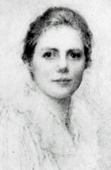
Lucia Fairchild Fuller was an American painter and member of the New Hampshire Cornish Art Colony. She was inspired to pursue art by John Singer Sargent. Fuller created a mural entitled TheWomen of Plymouth for the Woman's Building at the World's Columbian Exposition in Chicago in 1893. Best known for her portrait miniatures, she was a founding member and treasurer of the American Society of Miniature Painters.

Birgitta Kathleen Moran Farmer was an American artist particularly known for her portrait miniatures.

AnnHall (1792–1863) was an American painter and miniaturist.
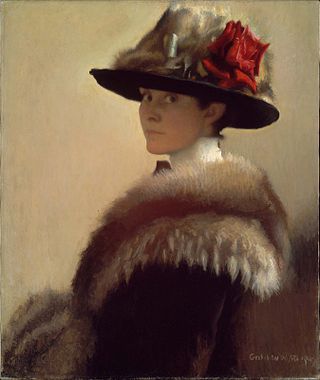
Gretchen Woodman Rogers (1881–1967) was an American painter associated with the Boston School.
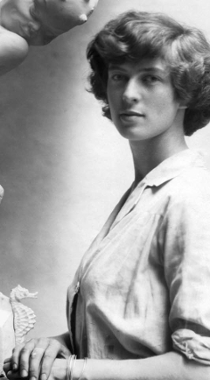
Helen Huntington Hooker or Helen Hooker O'Malley Roelefs was an American sculptor and portrait painter who spent a considerable part of her career in Ireland.

Louise Upton Brumback was an American artist and art activist known principally for her landscapes and marine scenes. Her paintings won praise from the critics and art collectors of her time. Writing at the height of her career, a newspaper critic praised her "firmness of character, quick vision, and directness of purpose." She said these traits "proved a solid rock upon which to build up an independent art expression which soon showed to men painters that they had a formidable rival." As art activist, she supported and led organizations devoted to supporting the work of under-appreciated painters, particularly women.
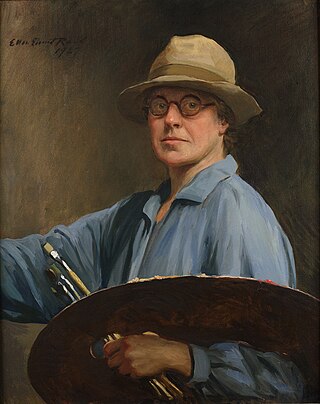
Ellen Emmet Rand was a painter and illustrator. She specialized in portraits, painting over 500 works during her career including portraits of President Franklin D. Roosevelt, artist Augustus Saint-Gaudens, and her cousins Henry James and William James. Rand studied at the Cowles Art School in Boston and the Art Students League in New York City and produced illustrations for Vogue Magazine and Harper's Weekly before traveling to England and then France to study with sculptor Frederick William MacMonnies. The William Benton Museum of Art at the University of Connecticut owns the largest collection of her painted works and the University of Connecticut, as well as the Archives of American Art within the Smithsonian Institution both have collections of her papers, photographs, and drawings.

Mabel Harris Conkling was an American sculptor, and president of the National Association of Women Painters and Sculptors from 1926 to 1928.
Lucy Scarborough Conant was an American artist, and a costume and set designer.

Else Winkler von Röder (Roeder) Bostelmann (1882-1961), a German Empire-born American artist, joined the New York Zoological Society in 1929 to paint marine life during William Beebe's bathysphere oceanographic expeditions at Bermuda's Nonsuch Island (1930-1934).
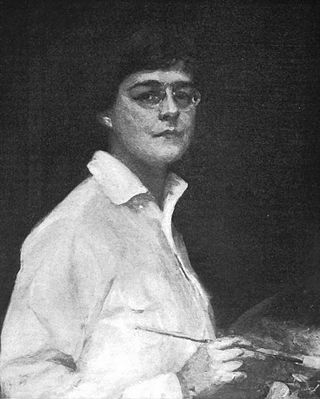
Harriet Blackstone was an American figure and portrait painter. Many of her subjects were midwestern business leaders and their families she also painted a number of prominent musicians.
Margaret Spencer Foote Hawley (1880–1963) was an American painter of portrait miniatures.

Mariette Leslie Cotton (1866–1947) was an American artist who usually gave her name as Mrs. Leslie Cotton. A student of William Merritt Chase, Carolus-Duran, and Jean-Jacques Henner, she worked mainly in Paris but also maintained studios in London and New York. By birth and marriage she possessed a level of wealth and social prestige that, together with her artistic skill, enabled her to obtain lucrative commissions from prominent individuals. The portraits she painted were praised for their veracity, style, and fine technique. Their subjects included kings, aristocrats, celebrities, and members of wealthy families. Late in her career a critic wrote that her "popularity has a sound basis, for her portraits combine such abstract artistic qualities as effective and infinitely varied design and daringly unconventional arrangements of color, with strong characterization and a likeness that never fails to be convincing," and added, "her concern with the artistic problem never makes her obtrude her own personality or offend the sitter's susceptibilities."

Martha Susan Baker was an American painter, muralist and teacher born in Evansville, Indiana, United States.

Frances C. Lyons Houston was an American painter. Houston was born in Hudson, Michigan. She died in Windsor, Vermont in October 1906.

















